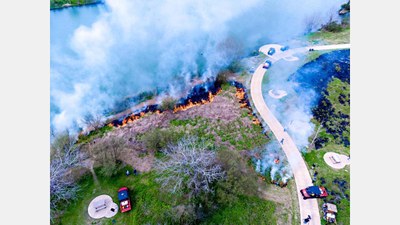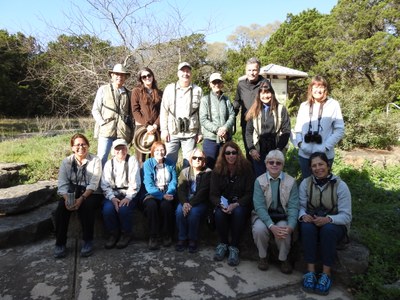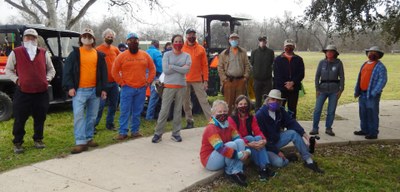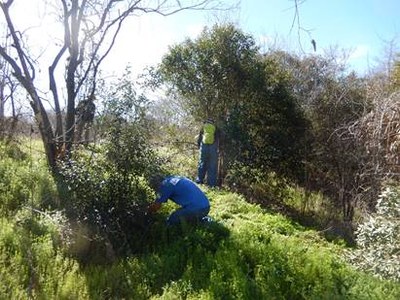San Antonio: Bird City Texas Certified Community
Learn more about the excellent work being done in San Antonio to involve their community, improve habitat, and create safer spaces for birds. Below you will find some details about San Antonio as well as a few examples of the local bird-friendly initiatives they have implemented that led to their Bird City Texas official certification. This list is not exhaustive but hopefully helps give insight on what local communities are doing to support birds and the spaces where they live. We hope these examples help you discover ways your community can work to protect birds and their habitat where you live.
Details
| Population: | 1,530,000 |
|---|---|
| Acres of Parkland: | 298,000 |
| Dates of certification: | 2021-2023 |
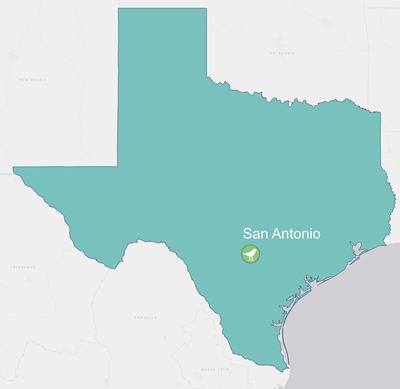
Community Engagement
Bexar Audubon Society (BAS) and the rest of the San Antonio Bird City Texas Collaborative Body are dedicated to making birding more accessible to all San Antonio folks, be they resident or visitor. BAS partnered with San Antonio River Authority to offer a binocular loaner program at various locations throughout the city as well as in leading enthusiastic beginner bird walks at the San Antonio Botanical Garden and at Mitchell Lake Audubon Center. Additionally, San Antonio is committed to hosting an annual bird festival, usually at Mitchell Lake, but will offer Zoom and socially-distanced experiences throughout the community as they move forward from COVID disruptions.
Habitat Enhancement and Protection
San Antonio has an ambitious plan to improve riparian habitat along the Headwaters at the Incarnate World, including cleanup of historic spaces, removal of invasive species and replanting the area with native species that will be more drought resistant as well as help mitigate flood damage when San Antonio experiences heavy rain. Additionally, San Antonio has recently completed the incredible Robert L. B. Tobin Land Bridge; a wildlife corridor that truly allows safer migration of a variety of animals.
Creating Safer Places for Birds
Bird strikes are devastating to wildlife and humans alike. While San Antonio continues to grow and expand, the Bird City Texas Collaborative body is making education and action around birds strikes a priority. They kicked off their monitoring program in the Spring of 2021 and are partnered with the Cornell Lab of Ornithology to increase darks skies and help birds migrate safely, with less bird-building collisions. Lastly, San Antonio is making nature is more accessible for people by improving their alternative transportation and encouraging folks to get out on the Howard W. Peak Greenway Trail system. Interconnecting systems like this bring people and wildlife closer together while improving the health of the community.
Want to learn more?
Contact San Antonio directly to learn more about what they are doing to protect birds in their Birding & Leisure Locations.
Additional Resources
Certification Criteria Commitment
Certified communities make a three-year commitment to accomplish specific projects, host bird-related events, promote local initiatives, pass bird-friendly ordinances, and more in order to achieve certification. These commitments fall into three categories: Community Engagement, Habitat Enhancement and Protection, and Creating Safe Spaces for Birds. Each category has a minimum requirement of actions a certified community must select. In addition to the example listed above, San Antonio has also committed to complete the following actions for each of the three categories.
Category 1: Community Engagement Criteria (5 required)
- Participates in at least one community science program annually
- Engage in long-term local bird monitoring programs that incorporate eBird and/or iNaturalist
- Create bird watching amenities in public parks
- Host at least one native plant sale with high emphasis on native plants (at least 75% native plants available).
- Speaker/workshop series focusing on birds, wildlife, habitat, environmental stewardship. Minimum of 3/year
- Annual bird festival that promotes community stewardship and appreciation of native birds and their habitats
- Engage traditionally underserved communities with parks, ecological education, and birding resources
- Educate the public about the responsibilities and best practices of providing food and water for birds vs natural habitat
Category 2: Habitat Enhancement and Protection Criteria (8 required)
- Develop and implement bird-centric wildlife management plan(s)
- Acquire and conserve land for birds, wildlife, and native plant communities
- Modify and improve existing habitat for birds, wildlife, and native plant communities
- Create and conserve wildlife corridors and connectivity between habitat areas
- Implement wetland habitat restorations or installations rather than stream channelization
- Adopt native-only recommended list for all new business and residential developments
- Permanent once/week landscape watering and/or native landscape incentive programs
- Implement an active invasive plant species removal program on public lands
- Use prescribed fire to benefit birds and native ecosystems
- Implement seasonal management practices that protect nesting birds
- Manage natural areas to encourage wildlife habitat, including “No Mow” areas for native plants
- Manage a municipal or public golf course for the benefit of native birds
- Conduct inventory of city lands to document plant and animal species and assesses habitat quality
Category 3: Creating Safer Spaces for Birds Criteria (4 required)
- Educate building owners/architecture community about Bird-Friendly Buildings
- Participate in National Lights Out Program
- Educational campaign on the impacts of pesticides and herbicides on birds
- Provide alternative transportation throughout community (hike/bike trails, rideshares, bike lanes)
- Remove invasive or harmful animal species, including some bird species, deer, and/or wild pigs.
